#蛇年大吉
Explore tagged Tumblr posts
Text

Happy year of the snake!! 🐍
I tried to get this done by new year's day but I couldn't finish it in time (and also fell into a rabbit hole of trying to figure out which snakes to draw 😂) I went with the mangrove snake and black rat snake in the end 🐍
29 notes
·
View notes
Text


happy lunar new year
1989年度香港小姐冠軍 陳法蓉@monicachanfy (Monica Chan Fat Yung) 1966年10月28日 T168cm
2 notes
·
View notes
Text
🐍!!HAPPY YEAR OF THE SNAKE!! 🐍
🐍新年快乐🎉恭喜发财🎉蛇年大吉🐍
#I'm probably gonna make some newyears art of my ocs soon#thankfully cny is 15 days so it probably wont be late lol#lunar new year#chinese new year#cny 2025#year of the snake#新年快乐#恭喜发财#蛇年大吉#sorry if my Mandarin is bad I'm still learning#🐍🐍🐍
2 notes
·
View notes
Text
可愛的「鼠人」們,看看推演的準不準。收藏,不準年底來砸我!
youtube
via @YouTube #屬鼠 #命理 #運勢 #2025 #蛇年大吉
0 notes
Text
can people please not get butthurt if a Chinese person tells you that they personally have a "Chinese New Year" dinner or event on or are celebrating Chinese New Year in some way, I mean like, they are Chinese ... what the fuck else are they going to be celebrating?????? don't correct them and say "Lunar New Year", i mean- they are Chinese so they are celebrating Chinese New Year. The Chinese Way. With their Chinese customs. Is this very controversial???
#my friend just told me she got told off by a korean colleague because my friend said she was having dinner with her family to celebrate...#guess what... chinese new year ... because she is chinese#like lunisolar and english language fuckery aside coz we call this chun jie tbh#i say happy seollal to my korean colleagues?? and happy chinese new year to chinese colleagues?? and then happy lny if I don't know or#want to cover all#i am not asking kr friends to say cny you can say seollal or whatever you like but#if a chinese person specifically says they are celebrating cny pertaining to themselves#... why is that ... a problem#.txt#???#蛇年大吉啊#顺便溜过来吐个槽#hhh
11 notes
·
View notes
Text

Happy Chinese New Year! 🐍🧧
祝大家蛇年大吉,万事如意!
#my art#twisted wonderland#twst#jamil viper#twst oc#oc#shiokawa mayu#jamimayu#tiiiny bit late but i made it!#thank you anon from a while ago for suggesting that i do this#tried to match the style as closely as possible to my new years art#so itd look like a series 😤#mayu has a snack in each hand she is winning#jamil you look really good in chinese style can i dress you in it more /j#although itd be nice if you could smile a bit for new years smh#finding the right refs for this one was a challenge#and the pattern on the shirt i picked for jamil was too complicated so i threw together something myself#but im really liking how it turned out ww
899 notes
·
View notes
Text

大年初一
福蛇登門,吉星高照 🐍💫
Happy Year of the Snake! Wishing everyone good luck and prosperity✨
(go get that bread chat🧧🔥)
#happy chinese new year!#year of the snake 🐍#大年初一#good omens#good omens fanart#crowley#aziraphale#aziracrow#ineffable husbands#art#digital art#fan art#digital drawing
325 notes
·
View notes
Text
Celebrate the Year of the Snake with a heart full of gratitude and cheer. In the spirit of the Snake, may you shed old limitations and discover untapped potential. Happy Lunar New Year 2025 to all friends and readers of my food blog.

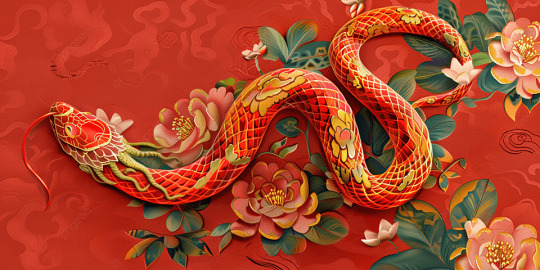
喜庆爆竹送金龙,吉祥梅花迎银蛇。蛇年行大运,好事连连,万事如意心也甜。愿你新年蛇舞如龙,财源滚滚,步步高升。祝大家新年快乐!

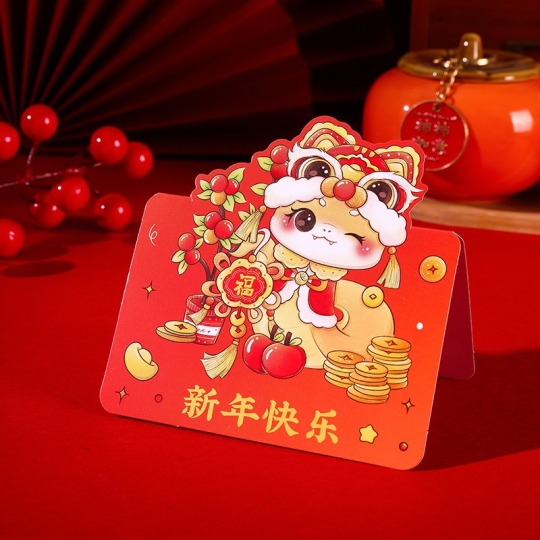
#Chinese New Year#农历新年#Lunar New Year#Year of the Snake#蛇年#Happy New Year#新年快乐#春节#Spring Festival#2025#Chinese Festival#Holiday Greeting#Celebration#Buffetlicious
149 notes
·
View notes
Text

★ 【NemOvO】 「 2025新年快乐🐍蛇年大吉 」 ✔ republished w/permission ☆ follow me on twitter // bsky
93 notes
·
View notes
Text


@kiki_hsieh 謝立琪Kiki
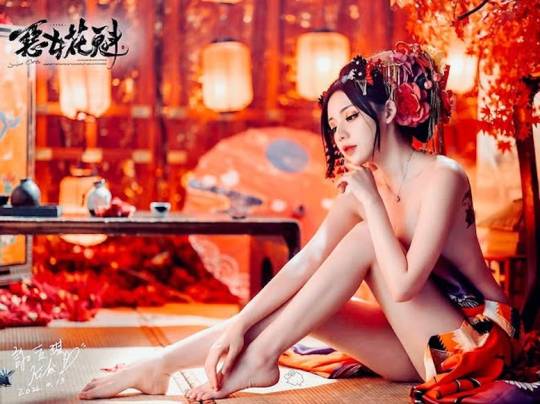
惡女花魁
Happy Lunar New Year!
6 notes
·
View notes
Text
祝大家新年快乐,蛇年大吉 ! 🏮🐍 Happy Chinese New Year!

#not if related#wish my brother luck because its been a bit since i've seen him#that younger sibling energy must come out
61 notes
·
View notes
Text


[teresaft]bodypreset_F12
一款蜜桃臀预设送给大家,提前祝大家蛇年大吉~ ♥🐍♥
Happy Year of the Snake
[TOU]
No reuploading as yours
No claiming as yours
No changing the mesh without permission
DL:SFS

38 notes
·
View notes
Text
April 20, Beijing, China, National Museum of China/中国国家博物馆 (Part 7 – Ancient Chinese Food Culture exhibition/中国古代饮食文化展):
Happy Chinese New Year and Lunar New Year to everyone in advance! Wishing everyone success in the Year of the Snake! 祝大家蛇年吉祥,万事如意!
CNY and LNY traditions vary by region, but the one thing that is definitely shared by everyone is that there's bound to be a family feast on the Eve (which for this year will be the 28th of January), so today's post will be quite fitting. Let us begin with alcohol-related artifacts:
The Alcohol (酒/jiǔ)*:
Liao dynasty (916 - 1125) gold wine vessel, where this type of vessel is named zhihu/执壶. Typically when you see similarly shaped vessels in Chinese period dramas, wuxia or xianxia shows, or animated shows, regardless of the material, it's always a wine vessel. The detailed low relief motifs of bird and flowers was crafted using repoussé and chasing techniques, together called zanke/錾刻 in Chinese:

*Note: although in this post I will be alternating between using "wine" and "alcohol" as the translation for jiu/酒, jiu can refer to all types of alcoholic drinks, and usually a descriptor will be added before jiu to create a new word for a specific type of alcoholic beverage. For example, wine would be called putaojiu/葡萄酒 in Chinese (lit. "grape alcohol"), and cocktails would be called jiweijiu/鸡尾酒 in Chinese (lit. "cocktail alcohol"). The names of traditional Chinese alcohols are descriptive in other ways, for example baijiu/白酒 (lit. "white alcohol"; actually it's colorless) and huangjiu/黄酒 (lit. "yellow alcohol"). Beer is called pijiu/啤酒 (lit. "beer alcohol") in Chinese, where pi/啤 is a homophonic translation of the English word beer.
Liao dynasty gold wine cups decorated with gold filigree, depicting clouds and birds:

Liao dynasty gold wine jug with a short spout in the shape of a beast head. The overall shape with flat ridges arranged vertically all around the vessel is called gualeng/瓜棱 (lit. "melon ridges"), so named because it resembles the shape of a ribbed melon.

China has a long history of making and drinking alcohol, which started at around 7000 BC. In the very beginning, alcohol was only produced in small amounts, so its use was reserved for ceremonies and celebrations. From roughly Han dynasty (202 BC - 220 AD) to Northern Song dynasty (960 - 1127) was the time period during which traditional Chinese alcohol making had matured. The famous Tang-era (618 - 907 AD) drunk poet Li Bai/李白 lived during this period of time.
Warring States period (476 - 221 BC) bronze wine jug inlaid with gold and silver:

Qing dynasty (1644 - 1911) enamel wine cups:

Beishan Jiujing/《北山酒经》 or "The Classic of Wine" by Zhu Yizhong/朱翼中 of Northern Song dynasty. This book covered the history of alcohol in China, and described alcohol making methods of the time, specifically the methods used to produce alcohol on a large scale.

8 Types of bronze wine vessels from Shang (·1600 - 1046 BC) and Zhou dynasties (1046 - 256 BC):
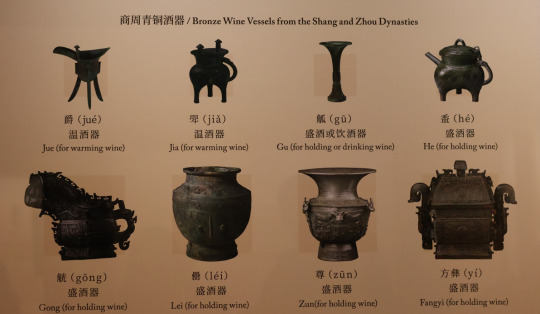
The Tea (茶/chá):
China also has a long history of growing and drinking tea, being the country where the beverage originated from. Specifically, tea drinking first started in what is now Yunnan province, developed into a culture in Sichuan, then spread to all of China and beyond.
Qing dynasty duck-shaped tin teapot:

Qing dynasty Qianlong era (1736 - 1796) lacquered teacup, decorated with a poem by the Qianlong Emperor, the same poem as the jade gaiwan/盖碗 from the jade exhibition. The technique of decorating here is called diaoqi/雕漆, where different colored lacquer were layered onto the object, and then patterns would be carved into the thick lacquer, revealing the layers of colors.

A flowchart of the tea preparing and making process in Song dynasty (960 - 1276), called diancha/点茶, which influenced Japanese tea culture. Because of the complexity of the diancha process, it was abandoned in Ming dynasty (1368 - 1644) in favor of simply steeping tea leaves in water.
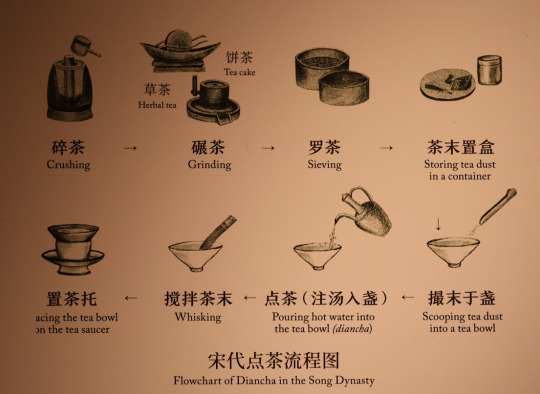
A video showing the Song-era diancha tea making process. This exact video also plays in the exhibition:
youtube
The Food (食/shí):
A Western Han dynasty (202 BC - 8 AD) small bronze hot pot, called a ranlu/染炉. Contrary to the modern Chinese hot pot where food cooked by boiling would be dipped in a bowl of room temperature condiments before eating, during Han dynasty people liked hot condiments, so this small hot pot was actually specifically for heating the condiments as people ate.

Various lacquered food containers from different dynasties.
Left: Western Han dynasty lacquered food container replica; when the original artifact was unearthed, it contained what seemed to be flatbread.
Middle: Ming dynasty 5-layered stacked lacquered food containers, held together with buttons, and decorated with diaoqi technique.
Right: Qing dynasty begonia-shaped lacquered fruit container, also decorated with diaoqi technique.

Qing dynasty tin tripod hot pot. This is a traditional Manchu hotpot, and its structure is quite similar to the classic Beijing style copper hotpot (I couldn't find anything that confirms a connection between the two, however). Both have a central chamber in the middle for charcoal (heat source), and the cooking is done in the heated water around the central chamber. The two biggest differences are the presence/absence of the tall "chimney" structure above the central chamber, and the material used. The reason this hotpot is tin may be because copper was mostly used to mint coins during Qing dynasty.

These two books were actually on display over at the Science and Technology exhibition, but I moved them here because that post was getting a bit too long. Since both books are about agriculture, they fit into this post quite well. The book on the left is Qimin Yaoshu/《齐民要术》 by Jia Sixie/贾思勰 in Northern Wei dynasty (386 - 534 AD), translated as either "Essential Techniques for the Welfare of the People" (the more accurate translation imho) or "Essential Techniques for the Peasantry". It is an encyclopedia on a wide range of agricultural and food processing techniques. The book on the right is Nongzheng Quanshu/《农政全书》 by Xu Guangqi/徐光启 in Ming dynasty, translated as "Complete Treatise on Agricultural Administration". This book is also an encyclopedia that covers agricultural techniques, but also has long sections covering what to do in response to floods and famines.

Pretty interesting and self-explanatory chart on when some crops, vegetables, and fruits were introduced to China (arranged in chronological order). As one can see here, Chinese cuisine had changed a lot over the past ~3000 years, and much of the changes took place during periods when trading activities increased and new produce were introduced. The best example of this is the introduction of hot chilis in late Ming dynasty, which directly resulted in the famous mala/麻辣 flavor profile of Sichuan cuisine and heavily influenced many other Chinese regional cuisines (Hunan cuisine, Guizhou cuisine, Anhui cuisine, etc).

A diagram explaining the seating arrangement in a palace's main hall in ancient times (top half), and the seating arrangement around a table in Southern and Northern China (bottom half). In all of these cases, the seat facing south (which also faces the entrance in traditional halls) is always reserved for the person of highest status, kind of like the seat at the head of the table. For the bottom half, the numbering indicates the order of seniority and/or inferiority (1 is the highest status).

Some examples of famous dishes from different dynasties, these are arranged in chronological order if going top to bottom, left to right:

Finally, some bonus pictures to serve as the conclusion to my brief trip to Beijing. This oil painting of the Great Wall was in the lobby of the museum, I thought it was pretty neat.

A peek at the Zhengyangmen/正阳门 gatehouse. Zhengyangmen is the southern gate (front gate) to the inner city in imperial times, today it's the only gate of the inner city that still stands.

A closeup of the Zhengyangmen gatehouse. I think the caihua/彩画 (the colorful painting on the building; also called caihui/彩绘) here had some restoration work done on it in recent years? It looks a lot more vibrant than the caihua on other historic architecture.

This is the last museum post (long post) of the 2024 China series (PHEW), and the final posts will all be fairly short, most of them about the food I've had. See y'all after CNY/LNY!
#2024 china#beijing#china#national museum of china#chinese cuisine#chinese history#chinese food#chinese culture#chinese architecture#chinese tea ceremony#chinese table etiquette#cuisine#food#alcohol#wine#tea#hot pot#history#culture#etiquette#architecture#Youtube
47 notes
·
View notes
Text

蛇年大吉 🐍🧧 happy new year!
42 notes
·
View notes

